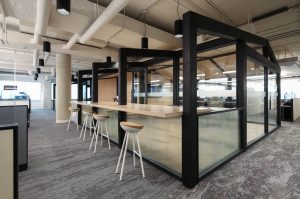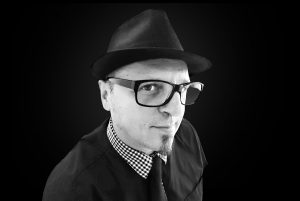- July 28, 2021
This article is part of a series that serves to address our thoughts on the future of architecture and design. We hope to inspire conversations about creating a better world for tomorrow, together.
Article by George Foussias
The time has come to return to office. We are coming back with questions, rather than answers – resulting in a continuously evolving spectrum of needs. Many have offered predictions, acknowledging that ultimately, the future lies in the user. Our collective questioning is an opportunity to transform the office into what we believe we should be going back to. That is, a space and community that will allow us to continue to enjoy the freedoms we have inherited from working from home, balanced with the benefits of being in a physical collaborative setting with our peers – a creative community. Now is the time to explore the role that design plays in creating and fostering a space that people will not only want to return to, but ultimately stay at.
What kind of office do you want to come back to?

We have been gifted this unprecedented moment of pause to reconsider where we spend eight to ten hours a day, five days a week. Along with an unparalleled disruption in the established office culture, we’ve identified new freedoms arising from our work from home reality; short but numerous breaks, increased wellness – daily walks, reduced time spent commuting, increased flexibility in schedules, and the ability to move around our homes to work from where we feel most comfortable.
The majority of re-entry strategies lie in safeguarding the new freedoms listed above, while finding solutions for the negative aspects of working from home, such as lack of social interactions, both professional and social, screen fatigue, environments that may not be conducive to concentrated work, distractions, and blurred environment lines between the office and home.
How can we as designers, design spaces that can shift and respond to emerging user needs, as they evolve throughout the next year?
The strength of user-defined environments

Workspaces represent more than how we perform our jobs, as they can translate into our physical, mental and spiritual health. By positioning community at the core of design, we can cultivate a sense of radical inclusion – a creative community. As designers, we can prepare the framework that allows for a healthy balance between the bespoke space and the public realm. We are no longer creating a fixed identity, but an outline and a structure that aligns with a company’s brand and values. This allows each organization to imagine their own unique and customized environment.
This can be achieved by activating some of the following strategies:
- Offer adaptive spaces that respond to the varying physical needs of the workforce such as alternative seating and workspaces
- Reimagine the distribution of the functional and social/cultural areas within an office, to promote a more integrated environment
- Be mindful that this phase will require patience and understanding; people have worked from home for the past eighteen months and will need to re-enter the office space in stages, and of their own volition
- Maintain the agility of the re-entry strategy rather than the rigidity of a fully articulated plan, however robust and thoughtful it may be
- Deploy a Net positiveTM approach, including natural light and biophilic design
- Welcome the user’s input and feedback. Facilitators must be prepared to gather and integrate feedback into their strategies – therefore, leading with fluidity and agility when it comes to planning
By placing users at the center of the design process, strategies around office spaces will lend themselves to supporting personal wellness and health. We will be better poised to cultivate and foster a strong sense of holistic wellness in the physical space and ultimately, convert a sense of space into place.
The office of the future includes a willingness to recalibrate
We now find ourselves in a transition from the phase of strategizing around what the workplace is going to look like, to a gradual return. The next phase that we embark on will be anything but linear, as we pilot and recalibrate various approaches to respond to both the external and internal factors that will unquestionably arise. Through this discovery phase, we will uncover temporary, intermediate, and long-term solutions that will seek to address this divergent point in office culture history. Will we ultimately return to a world that we were familiar with, post pandemic? Or will this global crisis be a catalyst for an entirely new chapter of workspace design – one that is called on to be more responsive and central to the wants and needs of its users?
Read our article on Biophilic design – a piece that explores the impact of biophilic design on wellness.
 George Foussias draws on over 20 years of local and international experience to promote design excellence in his project leadership in collaboration with various teams. His extensive knowledge and drive are reflected in his thoughtful, dynamic and engaging design solutions for the entertainment and hospitality markets. George has led several award-winning projects, most notably the CF Toronto Eaton Centre’s Samsung Experience and Toronto’s The Travel Centre. His in-depth knowledge of construction and engineering, architectural background and industrial design practice inform his exceptional understanding of how to conceptualize a design and successfully guide it through all development phases.
George Foussias draws on over 20 years of local and international experience to promote design excellence in his project leadership in collaboration with various teams. His extensive knowledge and drive are reflected in his thoughtful, dynamic and engaging design solutions for the entertainment and hospitality markets. George has led several award-winning projects, most notably the CF Toronto Eaton Centre’s Samsung Experience and Toronto’s The Travel Centre. His in-depth knowledge of construction and engineering, architectural background and industrial design practice inform his exceptional understanding of how to conceptualize a design and successfully guide it through all development phases.